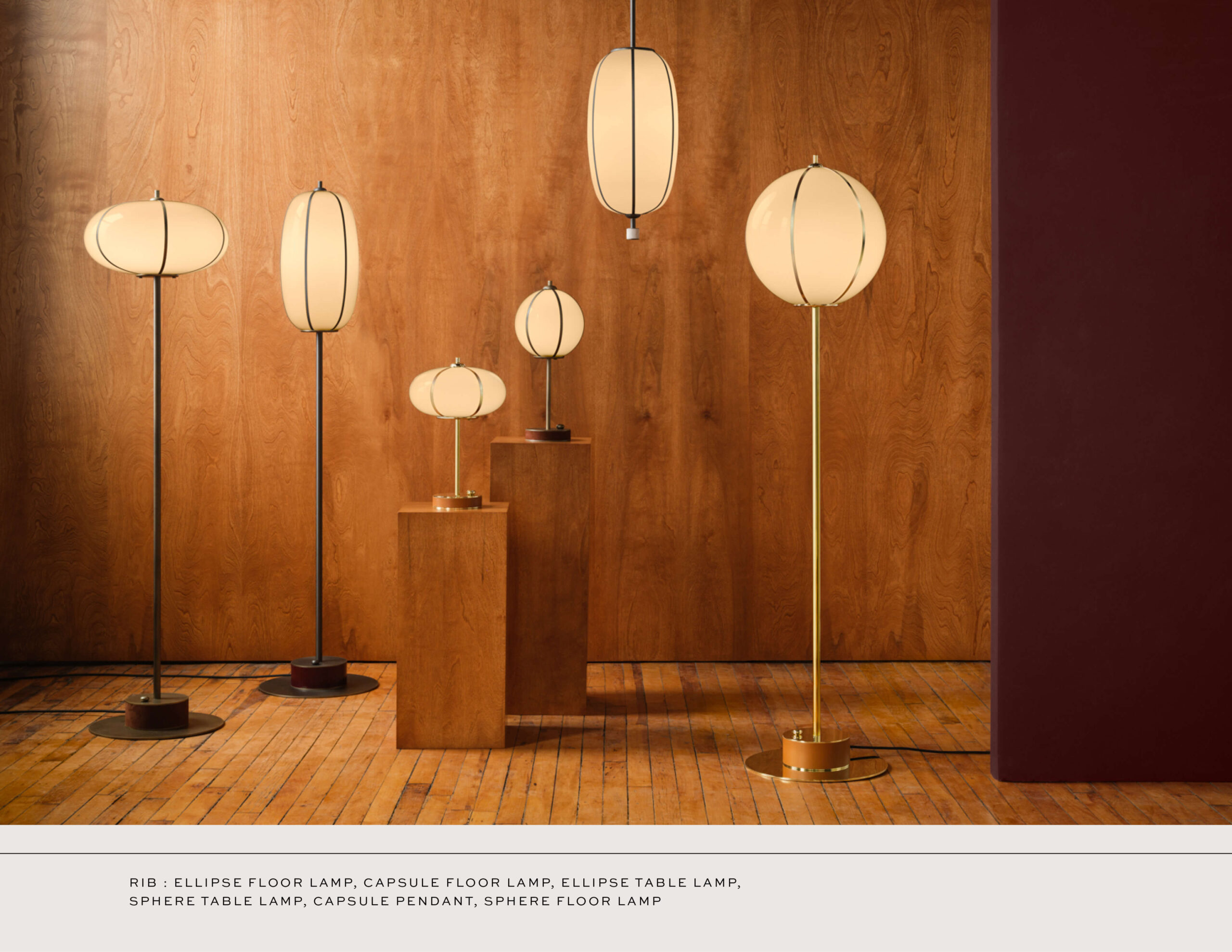


The Rib Collection
The Rib Collection features ceiling pendants, flush mounts and wall sconces showcasing a variety of shapes and sizes. Each piece of glass is blown in Italy and delicately framed by thin brass ribs. A cylindrical brass finial, with optional hand-wrapped leather or suede, elongates the pendant and adds a finishing touch of refinement.
The collection continues Konekt’s exploration of opposing characteristics — finding contrast and balance between strength and fragility, soft curves and sharp lines, adornment and moderation.









The Silo Collection
At the core of Konekt Studio’s ethos is their partnerships with artisans in Pennsylvania and the surrounding areas, and the merging of contemporary design with the age-old craftsmanship that runs deep through the history of the area. These cherished relationships with artisans of varying expertise have been cultivated for over eight years, which allows Konekt to explore and combine form and function in their designs.
Konekt’s journey has involved countless hours-long drives through the sprawling farmland of Southeastern Pennsylvania, particularly in Berks, Lancaster, and Bucks counties, where many of their partners’ workshops are located. These counties have a rich agricultural history with farming communities that made this region one of the “bread basket colonies” of the 17th and 18th centuries.
The farmlands of these counties are vast, open, and dotted with picturesque farmhouses and barns. Yet, beside many of the houses are grain silos, jutting up like small skyscrapers above the flat fields and lower-lying structures. These tall cylinders, elongated by a domed roof, cast an industrial and modern presence against an otherwise pastoral, timeless landscape.

Konekt developed a long-term obsession with this striking form – resulting in hundreds of iPhone photos taken while driving or pulled off to the side of the road to get a better view. The silos occupied their minds for years while they ruminated on how the shape could lend itself to furniture. The cylindrical base of the silo seemed like a natural table leg, yet the dome posed a hindrance to a functional surface. However, a hollow, removable dome could serve an unexpected purpose.
Konekt turned to two artisan partners in these areas who have been on their journey since day one – one a woodshop with master craftsmen and the other a meticulous welder, sculptor, and finisher. The final collection consists of a solid wood dining table, console table, coffee tables, and side tables complemented by hand-finished, brass-wrapped legs. A hollow brass dome sits atop each table, continuing the shape of the cylindrical leg into that of a silo – and transforming the whole piece with a bold and elegant presence.
The dome creates a secretive and playful location to hide small treasures or objects of everyday ritual. When gathering around the table, the magnetized dome can be removed as desired – revealing inlay brass to fill the visual absence – and kept elsewhere. This is form and function at its best.














































































 Hallworth // Eclipse Pendant
Hallworth // Eclipse Pendant








